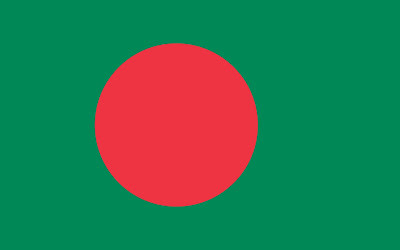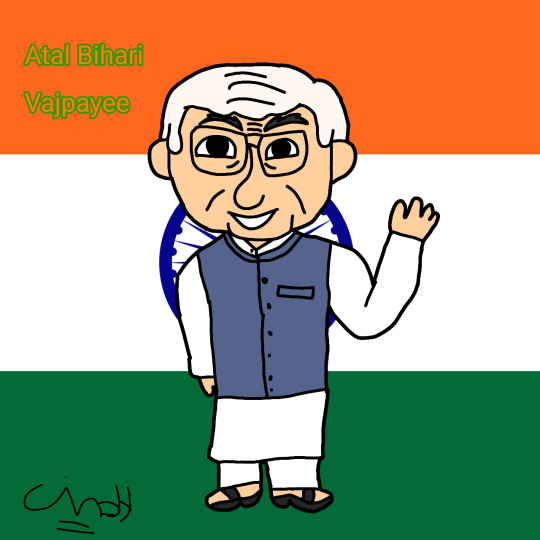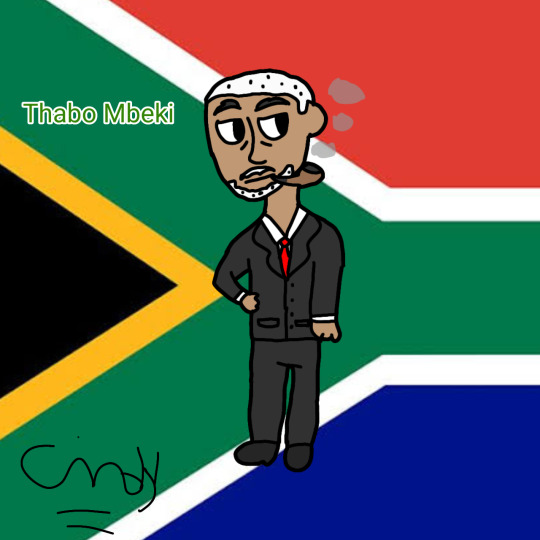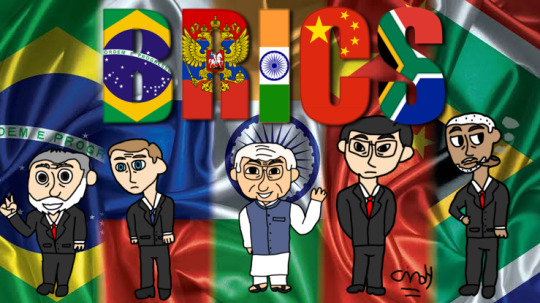#Biharis
Explore tagged Tumblr posts
Text
بے وطنوں کی دنیا

16 دسمبر پھر آ گیا ہے۔ یہ 52 سال قبل مشرقی پاکستان میں آیا تھا۔ وہ پاکستان اور مشرقی پاکستان جس کی بات ایسی ہے کہنے کا یارا نہیں۔ یقیناً آڑے وہی ہیں جنہیں مشیر کاظمی نے کہا تھا۔ کچھ تمہاری نزاکت کی مجبوریاں کچھ ہماری شرافت کی مجبوریاں
تم نے روکے محبت کے خود راستے اس طرح ہم میں ہوتی گئی دوریاں
کھول تو دوں میں راز محبت مگر تیری رسوائیاں بھی گوارا نہیں
اب اس 16 دسمبر میں غزہ کی جھلک شامل ہو رہی ہے۔ اس لیے بات صرف مشرقی پاکستان میں رہ جانے والے محصورین پاکستان کی ہو گی کہ پھر کسی کو پھر کسی کا امتحاں مقصود ہے۔ فلسطین میں بھی یہ واردات کی جانے کی تیاری ہے۔ وہ محصورین پاکستان جن کے ساتھ اب نام کی حد تک بھی پاکستان کا نام اور شناخت باقی نہیں رہی۔ بس ایک یاد ہے جو بہت تلخ، تکلیف دہ اور اذیت ناک ہے۔ ان محصورین کا تذکرہ اس لیے کیا جانا چاہیے کہ اس لہو کا اتنا تو حق ہے۔ یہ وہ لہو تھا جو ’پاکستان کے لیے بہا اور پاکستان میں اجنبی ٹھہرا۔‘ ایک طرف وہ خون تھا جو البدر و الشمس کے مشرقی پاکستانی نوجوانوں نے پاکستان کے لیے دیا تھا اور بعد ازاں اس خون کی قربانی دینے والوں کو ابھی کل کی بات ہے مطیع الرحمٰن نظامی سے پروفیسر غلام اعظم تک پھر قربان ہونا پڑا۔ ان ہی قربانی دینے والوں میں وہ محصورین پاکستان ہیں جو 1971 سے لے کر آج تک وہیں بنگلہ دیش کے کیمپوں میں بے بسی اور کسمپرسی کی زندگی گزارنے پر مجبور ہیں۔ ان کی کئی نسلیں انہی کیمپوں میں جی جی کے مرنے اور مر کے جینے پر مجبور ہیں۔ انہیں بنگلہ دیش قبول اور برداشت کرنے کو تیار ہے نہ پاکستان کی اتھارٹیز اپنے ہاں واپس لانے کو تیار ہیں۔ اپنے ہاں واپس لانے کی بات اس لیے کہی ہے کہ یہ سب اول و آخر پاکستانی تھے مگر پاکستان کی اتھارٹیز نے انہیں اپنے لیے ’بوجھ‘ سمجھ لیا۔ کبھی کبھی لگتا ہے ساری مسلم مملکتیں فلسطینی اتھارٹی کی طرح ہی بے بس اور کمزور ہیں۔ بے حس و حرکت، بے اختیار اور بے معنی۔ 1997 میں محصورین پاکستان کے قائد الحاج نسیم خان کی طرف سے اس وقت کی پاکستان کی منتخب اور دو تہائی اکثریت رکھنے والی عوامی جمہوری حکومت کے سامنے تجویز پیش رکھی تھی۔ محصورین کے نمائندہ فورم ’ایس پی جی آر سی‘ کے علاوہ پاکستان اور بنگلہ دیش کی اتھارٹیز باہم مل بیٹھ کر محصورین کے مستقبل کا فیصلہ کریں مگر اس وقت کی حکومت نے اس تجویز کو ’عزت دو کا مطالبہ‘ مان کر نہ دیا۔

نتیجہ یہ ہے کہ 52 سال بیت گئے مگر یہ محصورین پاکستان آج تک اپنے وطن پاکستان آ سکے، نہ لائے جا سکے اور نہ ہی پاکستان اتھارٹیز (پی اے) کو قبول ہونے کی نوید پا سکے۔ کیا کل کلاں اسی حالت میں فلسطینیوں کو دیکھنے کی سازش بروئے کار ہے؟ محصورین پاکستان کی دوسری اور تیسری نسل انہی بنگلہ دیشی کیمپوں میں پل کر جوان اور بوڑھی ہو گئی۔ مگر ان کی قسمت نہ کھل سکی۔ اب ان کے بڑے جنہوں نے اپنے پیارے پاکستان کے لیے بنگلہ دیش بنانے والوں کی مخالفت مول لی تھی، انہی بنگلہ دیش کی ’حسینہ‘ کے رحم و کرم پر ہیں۔ ہائے کیا چیز غریب الوطنی ہوتی ہے۔ یہ بنگلہ دیش کے مختلف شہروں اور مقامات پر 70 کیمپوں میں سے 1992 کے رابطہ عالم اسلامی کے تعاون سے کیے گئے ایک سروے کے مطابق اس وقت دو لاکھ 35 ہزار 440 کی تعداد میں موجود تھے۔ اب ان کی آبادی کیا ہے، اس آبادی کا مسقبل کیا ہے، ہماری بلا سے! والی صورت حال ہے۔ اس سلسلے میں بے تعلقی و اجنبیت کی ایک موٹی دیوار حائل ہے۔ جی ہاں مفادات کی دیوار، بےحسی کی دیوار اور احسان فراموشی کی دیوار۔ ہم عالم اسلام کا ایک قلعہ ہیں، اس قلعے کی اونچی فصیلوں کو کون پھلانگ سکتا ہے۔ ماسوائے ایبٹ آباد میں بھی دو مئی کو سرحدیں پھلانگ کر آ جانے والوں کے۔
انہیں محصورین پاکستان کے پڑوس میں میانمار کے بے وطن بنا دیے گئے روہنگیا مسلمان بھی ہیں۔ صدیوں سے میانمار کے باشندے ہونے کے باوجود ان روہنگیا مسلمانوں کو اندھی طاقت اور مذہب کا متعصبانہ استعمال کرنے والوں نے انہیں نکال باہر کیا۔ ہاں یہ درست ہے کہ ’روہنگیا‘ کو بمباری کر کے اور جدید ترین بحری بیڑوں کو قریب تر منگوا کر نکال باہر نہیں کیا گیا۔ ان پر صرف فوجی بندوقوں سے گولیاں برسا کر یا پھر ان کے گھروں کو آتش گیر مادے سے آگ لگا کر پہلے انہیں بے گھر کیا گیا۔ بعد ازاں انہیں جلاتے اور مارتے ہوئے زندگی سے بیگانہ یا گھروں اور ملکی سرحدوں سے دور کر دیا۔ مشرقی پاکستان اور میانمار کی ان ہی مثالوں نے مجبور کیا ہے کہ فلسطینیوں کو غزہ سے نکال کر مصر یا اردن میں محصور کر دیے جانے کے درد کو ابھی محسوس کر لیا جائے۔ ان کی بے گھری اور بے وطنی کے دکھ کو سمجھ لیا جائے کہ واقفان حال اور کھلی آنکھیں رکھنے والے سارے دیکھ رہے ہیں۔ غزہ کی پٹی پر سات اکتوبر سے ’ایف 35‘ طیاروں کی مدد سے جاری بمباری اور چند ہفتوں سے شروع کر دی گئی ’مرکاوا‘ ٹینکوں سے گولہ باری یہی بتا رہی ہے کہ غزہ کے فلسطینیوں سے غزہ کو پاک کر دینے کا فیصلہ کیا جا چکا ہے۔
حماس کے صفائے کا نام محض اصطلاحاً لیا جا رہا ہے تاکہ راستے میں سلامتی کونسل آ جائے تو اس پر ویٹو کا ہتھیار چلایا جا سکے۔ کوئی مسلمان ملک آنے کا سوچے یا زبانی ردعمل بھی دے تو اس کی قیادت کو اپنے پاس بلا لیا جائے۔ اگر ضروری ہو تو دھمکا دبکا دیا جائے۔ دولت و طاقت کے تمام نشے میسر ہونے کے باوجود سب ’آب غلی��‘ کی جھاگ کی طرح بیٹھ جاتے ہیں۔ اسی حکمت عملی کے تحت اب تک غزہ کے 80 فیصد سے زائد رہائشی فلسطینیوں کو بے گھر کیا جا چکا ہے۔ جی ہاں! بےگھر، بےدر اور آنے والے دنوں میں بے وطن کر دیے جانے کے خطرے کی زد میں ان فلسطینیوں کے آنے کا سو فیصد امکان بتایا جا رہا ہے۔ زبان و بیان کے فخر اور غرور کے تاج سروں پر سجائے پھرنے والے اور دنیا کے کئی خطوں میں پھیلے سب گونگے لوگ عملاً گونگے شیطان سے زیادہ کچھ نہیں۔ البتہ ایک اندر کے آدمی اور اقوام متحدہ کے ذیلی ادارے ’اونروا‘ کے سربراہ فلپ ارزارمینی نے لنکا ڈھا دی ہے۔ انہوں نے ’لانس اینجلس ٹائمز‘ میں لکھے گئے اپنے تازہ ترین مضمون میں خبردار کیا ہے کہ ’اسرائیل ایسے اقدامات کر رہا ہے کہ فلسطینیوں کو غزہ سے نکال کر مصر کی طرف دھکیل دیا جائے۔‘
اگرچہ اسرائیل اس امر کی تردید کرتا ہے اور غزہ میں جاری اسرائیلی جنگ کے سب سے بڑے مؤید و معاون امریکہ سمیت دیگر وغیرہ وغیرہ فلسطینیوں کے انخلا کے بظاہر حق میں نہیں ہیں۔ لیکن جس طرح منظم انداز میں غزہ پر بمباری کے لیے اسرائیل کو ہر طرح سے اور مسلسل مدد فراہم کی جا رہی ہے تو اس سے صاف لگتا ہے کہ سب کا اصلاً ایک ہی مقصد ہے کہ فلسطین کو فلسطینیوں سے پاک کر کے اسرائیلی قبضے کو آگے بڑھا لیا اور مستحکم کر لیا جائے۔ ’اونروا‘ سربراہ فلپ لازارینی کے اس تحریر کردہ مضمون کے مندرجات اس لیے بھی حقیقت نگاری کے زمرے میں آتے ہیں کہ وہ نہ صرف ’اندر‘ کے آدمی ہیں بلکہ غزہ جنگ کو اپنی آنکھوں کے سامنے ہوتا دیکھ رہے ہیں، وہ غزہ سے فلسطینیوں کی بے گھری کے چشم دید گواہ ہیں۔ سلامتی کونسل سے امریکہ کی جنگ بندی کے خلاف ویٹو کی تازہ گواہی اس پر مستزاد ہے۔ اردن کے وزیر خارجہ ایمن صفدی نے بھی امریکہ کے حالیہ دورے اور سلامتی کونسل میں جنگ بندی قرارداد ویٹو کیے جانے کے بعد دوحہ کانفرنس میں خطاب کے دوران یہی کہا ہے کہ ’اسرائیل فلسطینیوں کو غزہ سے باہر دھکیلنے کی منظم پالیسی پر عمل کر رہا ہے۔‘
اور تو اور اقوام متحدہ کے سیکریٹری جنرل انتوتیو گوتیریش نے بھی اسرائیل اور امریکہ کے طور اطوار کے بعد جو ’حاصل کلام‘ پیش کیا ہے وہ یہی ہے ’اقوام متحدہ ’جیو سٹریٹیجک‘ تقسیم کی وجہ سے مفلوج ہو گئی ہے۔‘ بلاشبہ اقوام متحدہ پہلے بھی تیسری دنیا کے بسنے والوں اور مسلمان اقوام کے لیے بالخصوص ایک فالج زدہ ’باڈی‘ رہی ہے۔ لیکن اقوام متحدہ کو طاقتوروں کے ساتھ مل کر کھیلنے کے لیے بھی جو لبادہ ضروری معلوم ہوتا تھا اب اس سے چھین لیا گیا ہے۔ غزہ میں تو بہت ساری مہذب دنیا اور عالمی اداروں کے چہروں کا خوشگوار سا لگنے والا غازا فلسطینی بچوں کے خون سے دھل کر صاف ہو گیا ہے۔ وگرنہ گوتریش اور ان کے پیش رو سیکریٹری جنرل حضرات کے سامنے ہی 75 برسوں سے فلسطین و کشمیر پر ان کی قراردادیں اسرائیل و انڈیا کی طرف سے سرعام ہی تو روندیں جاری رہی تھیں۔ فلسطینیوں کا حق واپسی، آزاد ریاست کا حق سب اقوام متحدہ کی موجودگی میں اسرائیلی صوابدید اور من مانیوں کی نذر رہا ہے۔
کیا اقوام متحدہ کو نظر نہیں آتا رہا کہ فلسطینیوں کے حقوق کی پامالی اسرائیل کو دیے گئے ہتھیاروں کے علاوہ امریکہ و یورپ کی سرپرستی میں کروائے گئے اوسلو معاہدے ایسے معاہدوں کی صورت بھی نہیں کی جاتی رہی؟ ان سازشی معاہدوں پر بھی عمل نہ کرا سکنا اقوام متحدہ کے پیدائشی فالج زدہ ہونے کی چغلی کھاتا ہے۔ یہی صورت کشمیر کے حوالے سے انڈین کردار کی رہی۔ پانچ اگست 2019 کے انڈین اقدام سے اپنے ہی آئین کے ذریعے اقوام متحدہ کی قراردادوں کی پاسداری کے لیے موجود اکلوتی کڑی کو بھی ختم کر دیا گیا۔ اب بھارتی سپریم کورٹ نے مودی سرکار اور ’آر ایس ایس‘ کے انداز میں کشمیر کو اٹوٹ انگ قرار دے دیا ہے۔ کیا اقوام متحدہ کا ادارہ اس بارے میں کبھی کوئی حس و حرکت دکھا سکا یا اب دکھا سکے گا؟ یہ مفلوج عالمی ادارہ اگر تھوڑا بھی واپس آنا چاہتا ہے تو اسے چاہیے کہ بھارتی سپریم کورٹ کے فیصلے کو اپنے لیے چمڑے کے ایک ٹکڑے کی طرح محسوس کر لے، سانس اور اوسان بحال ہو گئے تو افاقہ ہو جائے گا، ورنہ ہمیشہ کی موت کا اعلان کرنے کا جواز رد نہ کیا جا سکے گا۔
کیونکہ اسرائیل اور بھارت ایک ہی سکے کے دو رخ ہیں۔ عالمی طاقتوں کا ایک لاڈلا مشرق وسطیٰ میں ہے اور دوسرا جنوبی ایشیا میں۔ ایک فلسطینیوں کے حق واپسی اور حق خود ارادیت کو کچل رہا ہے اور فلسطینیوں کو بے گھر کر کے مار رہا ہے تو دوسرا کشمیریوں کے ساتھ یہی سلوک پچھلے 75 سال سے کر رہا ہے۔ اقوام متحدہ کی عمل داری کے دونوں باغی ہیں۔ دونوں سرکشی اختیار کیے ہوئے ہیں۔ بھارتی سپریم کورٹ کے آئین کے آرٹیکل 370 کے خاتمے کے حق میں فیصلے سے کشمیر کی ’ڈیموگرافی‘ تبدیل کر کے قضیہ کشمیر کو ہمیشہ کے لیے دفن کرنے کی کوشش کی گئی۔ مگر اس مقدمے کی عدالت میں سماعت کے دوران کبھی اقوام متحدہ کا نوٹس نہ لینا شرمناک سے کم نہیں کہ بھارتی سپریم کورٹ اقوام متحدہ کے ایجنڈے پر موجود ایک زیر التوا معاملے پر کیسے فیصلہ دے سکتی ہے۔ ہماری بات چھوڑیں ہم تو اپنے ملک کے اندر چوک چوراہوں پر اپنی عزت بچا کر بھاگ رہے تھے اور پاک وطن کی معیشت کی جلیبی کو سیدھا کرنے میں مگن ہیں۔ اسی بے عملی کا نتیجہ ہے کہ اب محصورین کے پاکستانی ماڈل کو فلسطینیوں کے خلاف اسرائیل بروئے کار لا رہا ہے۔
فلسطینیوں کو پہلے غزہ سے اور پھر مغربی کنارے سے نکال کر ادھر ادھر دھکیل دو۔ پھر انہیں واپسی سے روکنے کے لیے طاقت استعمال کرتے رہو۔ ان کے کیمپوں پر بمباری کرتے رہو۔ انہیں اسی صحرائے سینا میں گھماتے پھراتے اور مارتے دباتے رہو۔ جس میں کئی صدیاں پہلے خود یہودیوں نے 40 سال اسی صحرا میں بھٹک بھٹک کر گزار دیے تھے۔ کم از کم 40 سال تو ان فلسطینیوں پر بھی یہ خواری مسلط کی جا سکتی ہے۔ پھر کون سا مسئلہ فلسطین، کون سے آزادی پسند فلسطینی، کہاں کی حق واپسی کے لیے سنبھال سنبھال کر رکھی گئی چابیاں اور کون سے سرزمین فلسطین پر آبائی گھر؟ اتنے عرصے میں تو آسانی سے مسجد اقصیٰ کے مینارے بھی یورپ و امریکہ ہی نہیں خلیج و عرب میں ابھر چکے عظمت کے نئے نئے میناروں کے سامنے ایک بھولی بسری تاریخ بن چکے ہوں گے۔ اسرائیل کی یہ سوچ اس تناظر میں کافی کارگر ہوتی نظر آتی ہے کہ ہر طرف سناٹا ہے، خاموشی ہے۔ ہتھیار ڈالنے والوں کا سکہ رائج ہے۔ 16 دسمبر کی طرح ہتھیار ڈالنے والا ماحول شرق سے غرب تک پھیل چکا ہے۔ عرصے سے طاؤس و رباب اول طاؤس و رباب آخر کا ماحول ہے۔ ایسے میں بے وطنوں میں اضافہ کرنا کیونکر ممکن یا مشکل ہو سکتا ہے۔
تو کیوں نہ بے وطنوں کی ایک نئی دنیا بسا دی جائے، غزہ سے باہر، رفح کے اس پار اور صحرائے سینا کے بیچوں بیچ، ایک بے آب و گیاہ دنیا۔ امریکہ اور مغربی وغیرہ وغیرہ کی مدد سے۔ جہاں لوگ پاکستانی محصورین اور روہنگیا محاجرین کو بھول گئے وہیں فلسطینیوں کے لیے کون تڑپے گا؟
منصور جعفر
بشکریہ انڈپینڈنٹ اردو
0 notes
Text
लिहि ए अरग हे मैया, दिहीं आशीष हजार, करिहा क्षमा छठी मईया भूल-चूक गलती हमार ❤️









Picture source - My gallery
#desiblr#desi tumblr#desi tag#indian tumblr#desi shit posting#desi core#desi aesthetic#desi culture#indian aesthetic#moodboard#chhath puja#chhathcelebration#chhathimaiya#chhathmahaparv#chhathfestival#bihar#bihari#current mood#festivevibes#festival
21 notes
·
View notes
Text

Bihari women from Cairo, Egypt
French vintage postcard
#postal#bihari#egypt#historic#french#ansichtskarte#sepia#vintage#tarjeta#women#briefkaart#photo#postkaart#ephemera#postcard#postkarte#cairo#photography#carte postale
10 notes
·
View notes
Text

Quick doodle of Auphy and Bihari interacting it's been a while since I used this art stile and I wanted to draw the two of them together.
Art & Ohayo Region(c) @little-noko
204 notes
·
View notes
Text
the day i finally get married
me : mum, dad, meet my husband - kant.
kant : *nods*
also me : and this is kant's husband - bison.
bison : *smiles* *whips out gun and fires shots like a bihari on wedding day*
#kantbison#my shitposts#source : 29daffodils#the heart killers#the heart killers the series#bikant#p.s. : OP is desi and not shitting on biharis but they do in fact fire shots on wedding and then get people killed
8 notes
·
View notes
Text
Life motto: हरि दुख हरता, हरि सुख करता, हरि हरि हर नाम जपना।।🙏🏽
.
.
.
.
@kaal-naagin @h0bg0blin-meat @stardustkrishnaverse @amrut-aa @inc0rrectmyths
#hindublr#hinduism#kanhaiya#krishna#desiblr#krishna bhajan#krishnabhakti#vishnu#Mere banke bihari 🥺🙏🏽#made by me
62 notes
·
View notes
Text
बेनकाब चेहरे हैं, दाग बड़े गहरे हैं,
टूटता तिलिस्म आज सच से भय खाता हूं,
गीत नहीं गाता हूं,
लगी कुछ ऐसी नज़र बिखरा शीशे सा शहर,
अपनों के मेले में मीत नहीं पाता हूं,
पीठ मे छुरी सा चांद, राहू गया रेखा फांद,
मुक्ति के क्षणों में बार बार बंध जाता हूं,
गीत नहीं गाता हूं,
गीत नहीं गाता हूं....
- Shri Atal Bihari Vajpayee
49 notes
·
View notes
Text

Ruth nearly jumps out of her skin when something heavy and warm settles over her bare shoulders – though she almost immediately feels silly as strong, familiar hands settle on her shoulders and then run down her arms, sending warmth washing over her in their wake. Tired after the weird charity gala the Agency had talked them into attending, she leans back until her head is resting on Ava’s shoulder. Ava says nothing, arms settling around her with a soft contented sigh. They’ll have to leave eventually – definitely have to say goodbye to the investors and the Council and whoever else she’d been introduced to tonight before she’s truly off the hook – but she doesn’t care. For now, they are both content to stand in the moonlight and watch it dance on the pond and fountain below them. And that’s enough.
I grabbed a comm from @fat-rolls-frictions when she opened her comms last and I'm in love!! Thank you so much this is such a lovely little grad present to myself ;w;
142 notes
·
View notes
Text
Gulf migration is not just a major phenomenon in Kerala; north Indian states also see massive migration to the Gulf. Uttar Pradesh and Bihar accounted for the biggest share (30% and 15%) of all Indian workers migrating to GCC1 countries in 2016-17 (Khan 2023)—a trend which continues today. Remittances from the Gulf have brought about significant growth in Bihar’s economy (Khan 2023)—as part of a migrant’s family, I have observed a tangible shift in the quality of life, education, houses, and so on, in Siwan. In Bihar, three districts—Siwan, Gopalganj, and Chapra—send the majority of Gulf migrants from the state, mostly for manual labor (Khan 2023). Bihar also sees internal migration of daily wagers to Delhi, Bombay, and other parts of India. Gulf migration from India’s northern regions, like elsewhere in India, began after the oil boom in the 1970s. Before this time, migration was limited to a few places such as Assam, Calcutta, Bokaro, and Barauni—my own grandfather worked in the Bokaro steel factory.
Despite the role of Gulf migration and internal migration in north Indian regions, we see a representational void in popular culture. Bollywood films on migration largely use rural settings, focussing on people who work in the USA, Europe, or Canada. The narratives centre these migrants’ love for the land and use dialogue such as ‘mitti ki khusbu‘ (fragrance of homeland). Few Bollywood films, like Dor and Silvat, portray internal migration and Gulf migration. While Bollywood films frequently centre diasporic experiences such as Gujaratis in the USA and Punjabis in Canada, they fail in portraying Bihari migrants, be they indentured labourers in the diaspora, daily wagers in Bengal, or Gulf migrants. The regional Bhojpuri film industry fares no better in this regard. ‘A good chunk of the budget is spent on songs since Bhojpuri songs have an even larger viewership that goes beyond the Bhojpuri-speaking public’, notes Ahmed (2022), marking a context where there is little purchase for Gulf migration to be used as a reference to narrate human stories of longing, sacrifice, and family.
One reason for this biased representation of migration is that we see ‘migration’ as a monolith. In academic discourse, too, migration is often depicted as a commonplace phenomenon, but I believe it is crucial to make nuanced distinctions in the usage of the terms ‘migration’ and ‘migrant’. The term ‘migration’ is a broad umbrella term that may oversimplify the diverse experiences within this category. My specific concern is about Gulf migrants, as their migration often occurs under challenging circumstances. For individuals from my region, heading to the Gulf is typically a last resort. This kind of migration leads to many difficulties, especially when it distances migrants from their family for much of their lifetime. The term ‘migration’, therefore, inadequately captures the profound differences between, for instance, migrating to the USA for educational purposes and migrating to the Gulf for labour jobs. Bihar has a rich history of migration, dating back to the era of indentured labor known as girmitiya. Following the abolition of slavery in 1883, colonial powers engaged in the recruitment of laborers for their other colonies through agreements (Jha 2019). Girmitiya distinguishes itself from the migration. People who are going to the Arabian Gulf as blue-collar labourers are also called ‘Gulf migrants’—a term that erases how their conditions are very close to slavery. This is why, as a son who rarely saw his father, I prefer to call myself a ‘victim of migration’ rather than just a ‘part of migration’. It is this sense of victimhood and lack of control over one’s life that I saw missing in Bollywood and Bhojpuri cinema.
— Watching 'Malabari Films' in Bihar: Gulf Migration and Transregional Connections
#bhojpuri indentured history#malayalam cinema#bihari labour migration#gulf migrant labour#malayali labour migration#bollywood cinema#bhojpuri cinema#nehal ahmed
22 notes
·
View notes
Text


#atal bihari vajpayee#bridge#mumbai#photography#IT WAS SO FKING PRETTY Y'ALL#THE SKYLINE PICS THAT I GOT?!?!?#i had to rapid click them cuz stopping on the bridge wasnt allowed#...neither was photography for that matter but ya girl did it anyway#went for a drive after getting college shopping done#desiblr#desi tumblr#navi mumbai
11 notes
·
View notes
Note
please give the rant bestie 🤲
Sorry it took me a while to get to this cause I was turning the rant into a mildly coherent essay. (This is very long, I'm sorry :/)
TL;DR : India is a modern nation state that will face the challenge of falling apart if each indigenous group is indeed given sovereignity over their land, culture, and language so its easier to instead perpetrate the myth of an ethnically united Indian people with common language(s), religion, culture, etc to if the priority is to maintain a united, big country regardless of your political stance.
OK SO!
To preface this discussion, I want to point out that settler colonialism in South Asia predates the global modern perception of colonialism which comes largely from a European colonial lens. The subcontinent itself being a victim of modern European colonialism means a South Asian's default understanding of colonialism through lived experiences comes largely from a situation where we are the victims of colonization, not the perpetrators. This means there are deep rooted nuances and systemic privileges that the average Indian gets, that are easy to miss entirely if one is not actively looking for dogwhistles or watching out for propaganda, especially because the way Indians get introduced to colonialism is through the independence movement where there is a clear foreign entity that hasn't clearly assimilated into South Asian societies and whose parent country still exists. Then things get more complicated when the interplay between conquest and colonization comes in because the timeline of South Asian settler colonialism has heavy overlap with conquests where, for better or worse, stable monarchies were established with kingdoms where rulers that generally assimilated with the populace and were even well received by the people they were ruling over. Also note that I am going to be writing this from an Indian lens. There may be bias when I make general sweeping statements applicable to all of South Asia, because I am Indian and know Indian society best (at least macroscopically).
South Asian settler colonialism goes wayy wayy back, to the establishment of a Brahmanical Aryan society and benefits to being an upper caste Aryans over everyone else is very evident even in Ancient India. Let's take the Arthashastra as an example. In his 1987 translation of Kautilya's Arthashastra, political economist L. N. Rangarajan notes that not only being an Aryan had benefits in a Kautilyan society, but falsely posing as an Aryan to avail those benefits had grave consequences. You can find this translation in its entirety here. In the introductory section titled 'Kautilyan State and Society', the translator compiles points on not only the treatment of Non-Aryans, but details the consequences for interactions between Aryans and Non-aryans and even the difference in treatment each demographic gets. Eg: An Aryan man in a relationship with a Svapaka (dog-breeder, non-aryan) woman was branded and exiled, whereas a Svapaka man in a relationship with an Aryan woman was to be executed. Banished, an aryan man still lives. But if you cross the same line as a non-aryan man, you die.
The translation also has details on how to settle a 'virgin land' in Part IV of the text. While the general advice is to leave native 'jungle tribes' alone, the reason for this isn't granting territorial sovereignty, but to avoid being attacked by them. Granting indigenous groups territorial sovereignty is also bad for monarchic control so instead, non-aryans are given tasks and a place in the society as guards, labourers, slaves, etc (note that Arthashastra is very clear that aryans cannot be enslaved and slave labour must come from outside of Aryan social structure/outside of the Varna system).
The reason I bring up the Arthashastra here is due to a couple reasons. Arthashastra, to my knowledge, is one of the earliest known complete socio-economic treaty, dated either 4th Century BCE or 2nd Century BCE (contingent on if Kautilya is indeed Chanakya). It is exceptionally thorough and while it is uncertain whether what's detailed in the Arthashastra was reality or simply an ideal kingdom according to Kautilya, it does address and often disagrees with its contemporary or preceding socio-economic schools of thoughts, providing a multidimensional and ideologically diverse image of politics of the times, something revisionist history born out of nationalism wants to ignore. The other major reason I chose to bring up Arthashastra here is also to point out the revision of the perception and image of Kautilya to fit post-colonial, nationalist idea of the earliest historical entity to kickstart the subcontinent's unification, as opposed what it actually must have been, which is simply establishing a nation state through tactful conquest and settlement of lands. (Mauryan settler politics is also a separate rant btw, hmu if you want that too but that would be a digression here).
Settler colonialism of people present in the land before Aryan migration into the subcontinent of course, predates Arthashatra and Mauryan rule. But we are going to move forward in time instead and talk a bit about the medieval times. By the time European colonialism reached South Asia, our lands were hosting a myriad of communities, ethnicities, religious beliefs, etc. Foreign perception of 'the land beyond the Indus', the Greek 'India' or the Arabic 'Hind' and its people the uniform 'Hindu' is convenient for a west centric perspective trying to build a colony or a nation state out of South Asia. But the reality was not that homogenous and ethnic divides were rife in the subcontinent. Eg : Shivaji's rivalry against Aurangzeb was not a religious issue, it was born out of the sovereign claim of Marathas and Shivaji over Bijapur (source). While religious divide is most certainly present in the medieval India around the same time (eg: Guru Gobind Singh's establishment of the Khalsa and resistance against Aurangzeb), I believe ethnic divide was equally important.
The reason I bring up the dichotomy of religious and ethnic divides is because I believe division in terms of religion benefitted British control of India a lot more than ethnic division did. To that end, the British fanned the flames of the religious divide to break up ethnic solidarity. A good portion of South Asian kingdom split was by ethnicities (Marathas once again a good example of it). If ethnicities unite, they can come together to claim an independent nation state. But religious unity with multiple ethnicities doesn't work as a good model for a rebellion because ethnic divide is so dominant and not to mention, even a single South Asian religion was never that united to begin with, especially the blanket religion of Hinduism with its caste heirarchy, untouchability, non-aryan tribal politics, etc, etc. A religious divide would aide British control. A united Bengali front could ask back for an independent nation state of Bengal but a divided Bengal based on religion is a good way to cultivate infighting so that we may never unite against the oppressor.
200 years of fanning the religious divide flame required as strong of a uniting front if the British were to be thrown out and the freedom movement, especially the one born out of Gandhian efforts provided just that. Caste, ethnic, and religious unity were always a front for Gandhian politics and they served their purpose well against a common eenemy. But what after the common enemy is gone? Modern South Asian society then ended up with the same old ethnic and religious tensions, though at this point in time, religious divide is far stronger than it has ever been. Though no division of a multireligious ethnicity could be clean, and considering that ethnic unity has been a glue far stronger than religious unity before now, the Indo-Pak partition that broke that glue of ethnic unity and was so bloody that our scars from then bleed to this day.
However, in my experience, the modern Indian who has never seen a time where ethnic unity overpowered religious unity or isn't part of an indigenous community whose land has been taken by the modern nation state, finds religious claim to the land ideologically easier to comprehend than indigenous claim to the land. The Kashmir issue is a great example of this. Azad Kashmir has its own self governing body with its own PM and President, albeit being under the administration of Pakistan. I am not Kashmiri, do not live in Azad Kashmir, and have no direct experience of the Kashmir conflict but from what I know, on paper Azad Kashmir is a sovereign piece of land inhabited by various ethnic groups from Punjab, Jammu, Kashmir valley and the Pothohar plateau. However, as an Indian, this region was introduced to me as Pakistan occupied Kashmir and the map of India I was taught includes this as a 'rightful' part of India. A third option of an independent Kashmir is never introduced to us by formal channels. The only two options we get are either Indian or Pakistani control and if you are Indian, there is a supposed right answer that is very wrong on multiple levels. J&K's handover to India was messy because the land was sold to Gulab Singh by the British when the British had no indigenous claim to the land. Kashmir issue is an issue of indigenous sovereignty spun around as an issue of religious divide. The Kashmir Valley didn't get independence with India because its authority went from European colonizers to a vassal princely state to a newly formed nation state, making the said newly formed nation state of India its new settler colonizer. Just like Tibet did not get independence when Nehru ceded it to China when he had no right to. Kashmir didn't become a part of India like Goa did either, where the Indian army fought a second war of independence against the Portuguese, though it is unclear to me if this was/is a move the native populace was okay with (did we make Goa India's Hawaii? Something I need to read up more on). At the very least, in case of Goa, it seems the colonial rule was overthrown in line with the native Goan Liberation Movement's sentiments (source but it is a govt website), though the Indian army fully intended to annex Goa regardless of local resistance. But the Kashmir Valley was ceded to India by someone who had no right to do so. This would have been wrong regardless of the majority religion in the Kashmir Valley, but because religious extremism and violence did happen in the valley and the post-independence territorial India/Pakistan issue was indeed a religious one, the Kashmir issue is best understood by the average Indian as an issue of religious divide and not an issue of indigenous sovereignty when it very much is so. This also means any nationwide Kashmiri liberation movement does not get any traction and the small pockets it exists in can be relabeled as militancy or terrorism.
Modern nation state of India discredits any indigenous movement by flipping it into an issue of religious divide, when it can. It's even more evident post-2014 when religious polarization has been consistently used as a tool to deflect from various policies and national issues that the government should be held accountable for. Changing Gurgaon to Gurugram along with a wave of name changes like Allahabad -> Prayagraj or Mughalsarai -> Pandit Deen Dayal Upadhyay Nagar as a statement of 'reclamation' and decolonization like Bombay -> Mumbai or Calcutta -> Kolkata were, is an example of this. If we are to even admit that all Islamic rule in South Asia was foreign colonialism and ignore the fact that Pandit Deen Dayal Upadhyay had no claim to the land of Mughalsarai before it was named Mughalsarai, the switch from Gurgaon to Gurugram in 2016 was blatantly discrediting indigenous languages spoken in the region in an attempt to make its Sanskritic and Vedic associations more accessible to those not native to the region.
Adding Sanskrit as the second the state language of Uttarakhand after Hindi in 2010 by its then CM is another such move. Note that this is pre-2014 but the CM of the time who made the addition, Ramesh Pokhriyal, is a member of the BJP. Also note that there are no Sanskrit speakers in the region. Though, Kumaoni and Garhwali, the most spoken regional languages as per the 2011 census are not currently one of the 22 languages recognized in the constitution and there is an ongoing motion for both to be included in the constitution as one of the 38 additional languages. A genuine push to preserve indigeneity of the ethnic groups in Uttarakhand in 2010 shouldn't have been making Sanskrit its official language but for inclusion of Kumaoni and Garhwali in the constitution and giving them the status of official languages of the state that they so rightfully deserve.
Undermining local languages and bestowing superiority to a blanket language isn't a rare tactic when it comes to colonialism of any kind. Both Hindi and Urdu serve this purpose in modern South Asia and Sanskrit serves the same purpose in revisionist history in hopes of peddling the front of a united nation state with credible historicity. The myth of 'we are one people and always have been' is propagated so that it can be used to bind a nation state that was fundamentally never together. While the imposition of language as a way of control is more evident in the South, especially with anti-Hindi sentiments coalescing into full fledged movements, even the idea of 'The Hindi Belt' and a uniform North India are a result of this. The Gangetic plains where the Hindi Belt is supposed to be, isn't linguistically uniform. But barely any language from the region is recognized in the constitution. Take Bihar for instance. A state with some of the most underprivileged population in the country often victim of nationwide elitism and classism, it is very conveniently drafted into the Hindi belt and any recognition of linguistic diversity it gets is derogatory, be it mocking Bihari Hindi or mocking Bhojpuri. However, despite Bihar's national image of a supposedly Bhojpuri speaking state, Bhojpuri isn't one of the languages recognized in the constitution. What's even more interesting is that the Bhojpur region is split between Bihar and UP and is by no means the only language native to the state. There are multiple linguistic spheres in the state and there is active dispute and infighting on what's a language and what's a dialect. Take this map for instance (English added by me) -

If you can read Hindi, notice that Chhapariya and Bhojpuri are labeled as dialects of Hindi. But are they though? Hindi/Urdu or Hindustani/Urdu were born out of a need for a lingua franca in the Delhi region and include vocabulary from northern languages that broke out of Shauraseni Prakrit (like Awadhi, Brij Bhasha, Khariboli) as well as Persian, Arabic, and Chagatai. Meanwhile, languages of Bihar broke out of Magadhi Prakrit, an entirely different dialect than Shauraseni Prakrit with its own quirks and features. Bhojpuri's split from Magadhi Prakrit likely started happening in the 7th Century CE, independent and in parallel to formation of Hindustani as a language (7th to 13th century CE). How can a language be a dialect of another language if their histories, linguistic progression, and demographics are all different? Well, if you never acknowledge that it was dialects of Prakrit that Indic languages come from and not Sanskrit, then you may be more successful in enforcing cultural homogeneity instead of retention of indigenous diversity. One could argue that this map may be an isolated case of the issue but the fact that linguistic diversity of culturally northern states is erased when speaking about establishment of an ideal national identity modelled after the strawman people of the Ganges-Yamuna region (The 'Hindi Belt') is a mark of settler erasure to ensure a united front for the nation state of India.
Homogeneity is easy to control/unite. A religious ethnostate is one way to get that homogeneity but sovereign governance for indigenous groups isn't something the center or the left is keen on either, and it won't ever be on the national agenda because it shakes the very foundation of a united Indian nation state. Indian nationalist propaganda relabels and creates a strawman/ideal 'Indian' identity (uniformity in religion, language, looks, etc). Language in particular is an interesting case of this and even the so called 'Hindi belt' is not homogenous and the languages in the said Hindi belt are barely even recognized in the constitution. No recognition of official languages means there will be no official records or means of propagating the language beyond informal familial and community structure which eventually erodes linguistic diversity, a phenomena that has already started happening in cities in particularly upper and upper middle class urban families, who are leading this change by either only teaching their children English in the name of 'progression' or only Hindi for assimilation. The elite, classist left will not suddenly abandon English and the right wing will take up Sanskrit or Hindi as opposed to their ethnicities' native languages. Mockery, microaggression, exoticism of different ethnicities and indigenous groups is also going to stay and any movement for claims of landback will be subject to allegations of dwindling patriotism at best and militancy at worst. Even if a Hindu nationalist sentiment is eradicated, settler colonialism will continue in India for the foreseeable future.
I hope this was somewhat coherent and apologies again for it being so long....
#eesha's asks#asks#south asia#india#lang#colonialism#hist#long post#also disclaimer that i am not of any bihari ethnicity but my family has been in patna since like 1836 so i do consider myself bihari#and have faced discrimination for it outside the state so i am speaking from experience when i talk about the rest of the country's biases
9 notes
·
View notes
Text







B.R.I.C.S. but in 2003 (2000s)
I was inspired with @/viktor_regnsky on Instagram, Eggcountries an CountryHumans version.
That's why I draw them.
#brics#brazil#russia#india#china#south africa#world leaders#politics#lolitics#cindy the cat pink art#cindy the cat pink#countryhumans#luiz inacio lula da silva#vladimir putin#atal bihari vajpayee#hu jintao#thabo mbeki
23 notes
·
View notes
Text
Not my seniors asking me mere bihari boyfriend kaise mera dimag kharab nahi kar raha
4 notes
·
View notes
Text
Bihari tere pyaar mein paagal, hara hai sabhi
Deewani dil-haal toh puchne aaja tu kabhi
Milaati mujhe maa se ki, Adi' se pyaara toh nahi hai yaha
Sikhaati ab sheher badal ke thikaana tu nahi
2 notes
·
View notes
Photo

Sándor Bihari - Self portrait
25 notes
·
View notes
Text
मौत से ठन गई l
जूझने का मेरा इरादा न था,
मोड़ पर मिलेंगे इसका वादा न था,
रास्ता रोक कर वह खड़ी हो गई,
यूं लगा जिंदगी से बड़ी हो गई।
मौत की उमर क्या है? दो पल भी नहीं,
जिंदगी सिलसिला, आज कल की नहीं।
मैं जी भर जिया, मैं मन से मरूं,
लौटकर आऊंगा, कूच से क्यों डरूं?
तू दबे पांव, चोरी-छिपे से न आ,
सामने वार कर फिर मुझे आजमा।
मौत से बेखबर, जिंदगी का सफ़र,
शाम हर सुरमई, रात बंसी का स्वर।
बात ऐसी नहीं कि कोई ग़म ही नहीं,
दर्द अपने-पराए कुछ कम भी नहीं।
प्यार इतना परायों से मुझको मिला,
न अपनों से बाक़ी हैं कोई गिला।
हर चुनौती से दो हाथ मैंने किए,
आंधियों में जलाए हैं बुझते दिए।
आज झकझोरता तेज़ तूफ़ान ��ै,
नाव भंवरों की बांहों में मेहमान है।
पार पाने का क़ायम मगर हौसला,
देख तेवर तूफ़ां का, तेवरी तन गई।
मौत से ठन गई!
- shree Atal Bihari Vajpayee
25 notes
·
View notes